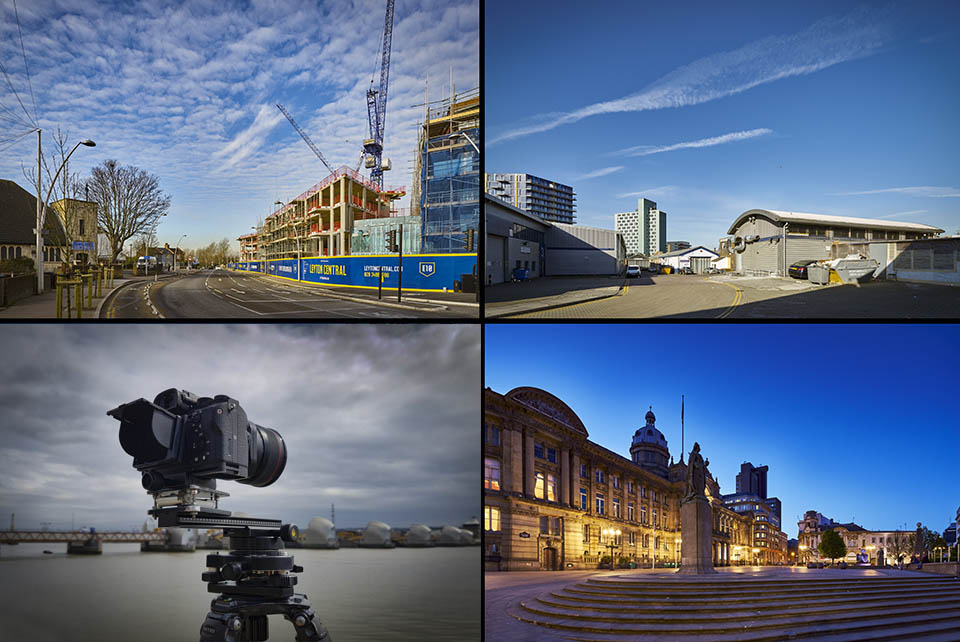Photography
Planning photography by it's nature is restrictive of many of the key aesthetic decisions normally available to a photographer. The choice of camera position and framing are dictated by the needs of providing a visual comparison of the proposed scheme to it's context rather than creating the most dynamic composition. The photographer therefore is left with an essentially technical task which includes choosing the optimal time of day with regards to sun angle and accurately representing the scene in terms of tone and colour.
Single Frame
Images are captured using standard high quality architectural photographic practice using a > 40mp / 36x24mm sensor camera with a range of shift lenses that maintain a 2 point perspective.

Panoramas
Panoramic images are a useful option for very wide angle views as they avoid the stretching distortion at the frame edges and diminishing size in the middle which allows a viewer to make better informed judgements about the relative position and scale of objects over a large FOV. The drawback is that straight lines running across the frame appear curved and this is why they are best used in rural locations or where there are few such features in the foreground. Observe the effect in the image below by rolling over it with the cursor.
Panoramic images are captured on a custom made panoramic mount that can rotate to an axial tolerance of <0.01deg. A sequence of images are captured in the portrait format with a 100% overlap which are then stitched together to create an equirectangular* projection which is accurate enough to be aligned to survey points in any part of the final stitched image.
The vertical field of view is normally fixed at 38deg with horizontal angles in the 90 -180deg range. Due to the large file sizes when stitching images in this way the final output is reduced to a scale of 100 pixels per degree so a 40deg x180 deg image = 4000px x18000px (72mp).
The accuracy of the process with regards to camera positioning and panorama creation can be demonstrated where repeat images in different seasons are required to show the effects of foliage on a view. Images can be aligned within 1 pixel of each other in any part of the frame.
* This is also sometimes identified as 'Cylindrical ' as the vertical FOV is restricted to the equivalent of a 50mm lens used in a portrait orientation.
© Arcminute Ltd Registered in England and Wales No 7544732


